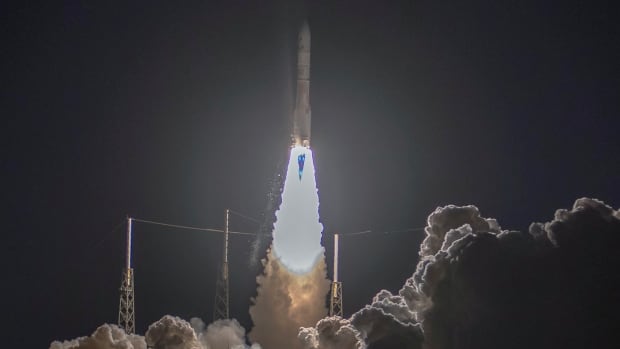A robotic lander built by a private company was bound for the moon on Monday in an attempt to make the first U.S. lunar soft landing in more than half a century, after launching into space aboard a new rocket that was the result of a joint venture from Boeing and Lockheed Martin.
Space robotics firm Astrobotic’s Peregrine lunar lander launched at 2:18 a.m. ET from Cape Canaveral, Fla., on the first flight of Vulcan, a powerful rocket that had been under development for a decade by the Boeing-Lockheed venture United Launch Alliance (ULA).
“Yee haw, I am so thrilled,” ULA CEO Tory Bruno said in the company’s launch control room. “This has been years of hard work. So far this has been an absolutely beautiful mission.”
If all goes well, Peregrine would mark the first U.S. soft landing on the moon since the final Apollo landing in 1972, and the first-ever lunar landing by a private company — a feat that has proved elusive in recent years.
“This is the moment we’ve been waiting for for 16 years,” CEO John Thornton of the Pittsburgh-based Astrobiotics said. Applause roared in the launch control room when Peregrine was released from its booster stage, setting the golf cart-sized craft on its 46-day journey to the moon.
Rival private co. could get there first next month
The mission is the latest in recent years among countries and private companies sprinting to the moon, a reemergent stage of international competition where scientists hope its water-bearing minerals can be exploited to sustain long-term astronaut missions.
The launch of Vulcan, a 60-metre tall rocket with engines made by Jeff Bezos’s Blue Origin, was a crucial first for ULA, which developed the rocket to replace its workhorse Atlas V rocket, while rivalling the reusable Falcon 9 from Elon Musk’s SpaceX in the satellite launch market.
The stakes were high for Vulcan. Boeing and Lockheed, which own ULA in a 50-50 split, have been seeking a sale of the business for roughly a year. And the launch was the first of two certification flights required by the U.S. Space Force before Vulcan can fly lucrative missions for the Pentagon, a key customer.
Peregrine is set to land on the moon on Feb. 23 with 20 payloads aboard, most of which will seek to gather data about the lunar surface ahead of planned future human missions. It marks the first trek to the moon’s surface as part of NASA’s Artemis moon program.
That multibillion dollar program, involving various countries and relying heavily on private companies such as SpaceX, envisions astronaut missions to the moon later this decade. Small landers such as Peregrine will get there first.
A second private U.S. company under the same NASA program expects to launch a lander of its own in February. Carrying similar NASA payloads and launching to space aboard a SpaceX Falcon 9 rocket, Houston-based Intuitive Machines’ said its spacecraft could make a moon landing on Feb. 22, a day before Peregrine.
India last year became the fourth country to achieve a soft lunar landing after Russia failed in an attempt the same month. The U.S., China and the former Soviet Union are the only other countries that have carried out successful soft lunar landings.
CBC News: The House14:00Canada’s renewed interest in the final frontier
Commercial space launches from Canadian soil have been given the green light. The first moon-bound Canadian astronaut will soon be officially selected. But at a time when the pressure is high to invest in other areas like health care and green technology, is this the best way to spend our resources? Canadian astronaut David Saint-Jacques tells Catherine Cullen why he feels it’s essential to shoot for the moon.
Private companies with hopes of spurring a lunar marketplace have had harder times, with Japan’s ispace and an Israeli company crash-landing on their first attempts.
The Soviet Union and the U.S. racked up a string of successful moon landings in the 1960s and 70s, before putting touchdowns on pause.
Besides flying experiments for NASA, Astrobotic packed the 1.9-metre-tall Peregrine lander with everything from a chip of rock from Mount Everest to the ashes and DNA of deceased space enthusiasts, including Vancouver woman Gloria Knowlan, as well as the remains of science fiction writer Arthur C. Clarke, Star Trek creator Gene Roddenberry and Star Trek cast members Nichelle Nichols, DeForest Kelley and James Doohan.


